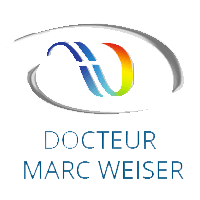The key issue is not age but myopia stabilization; at least 2 years of stable refraction are required prior to surgery decision. Each single myopia has a different scalable profile, which has to be taken in account.
However it may be useful to perform surgery on unstable myopias, in cases of particular professional requests (entry into the army, police, and so on); in such cases secondary optic correction will be necessary and reoperation considered after myopic stability achievement.
No there is no limit in age.
However age and potential concomitant presbyopia may influence surgical feasibility as well as the choice of the surgical technique.
No, there are several contraindications. It is the main purpose of preoperative consultation to detect and eliminate inappropriate candidates.
Some patients are not operable at all; others are only eligible for specific techniques. For instance too thin corneas contraindicate LASIK but allow PRK or placement of an intra ocular lens. Therefore, your surgeon must have the ability to indifferently perform all surgical procedures in order to let you benefit from the most appropriate one.
Yes in a vast majority of stable myopia cases, in contrary to the misconception that pregnancy would increase myopia.
In fact pregnancy does not create per se myopic progression, except rare cases of very high myopias. Hormonal changing during pregnancy may simply have a transitory and reversible effect upon vision.
On the other hand, it is contraindicated to operate a woman during pregnancy and breastfeeding until normal menstrual cycles return.
Contact lens removal is mandatory 48 hours before surgery in case of soft contact lenses, 1 month in case of rigid contact (it is possible to temporarily replace them by soft ones which will be removed 48 hours before surgery).
Surgery is performed under local anaesthesia, by anaesthetic drops instillation. In contrary to popular belief there is no injection in the eye. Oral sedation is given two hours prior to surgery, in order to manage legitimate apprehension.
Both eyes have surgery in the same operative session. The procedure is fully painless and lasts about 30 minutes. The patient is discharged one hour later and should be taken home back by a relative. Driving is not permitted the day of surgery.
Myopia refractive surgery is extremely safe, provided common sense rules are respected, rules that I have been uncompromisingly following during all my practice: rigorous and appropriate patient selection with absolute respect of all contraindications, use of last generation measurement devices and lasers, operating rooms with highest security standards.
Side effects may happen in the following weeks (glare, vision fluctuation, halos); usually minor and impermanent, they do not impact final visual result, even if rarely a touch up may be needed. Surprisingly surgery is less risky than contact lens wearing, especially in terms of infectious risk. This type of surgery has now a long follow-up and has demonstrated its maturity and safety.
These issues are correlated to the procedure.
LASIK, SMILE, and intra ocular lenses cause more discomfort than true pain; visual rehabilitation is fast, taking several hours to one day.
Visual recovery is longer for PRK and EPILASIK and can take a week. For both techniques discomfort may be more pronounced; in order to prevent true pain a bandage contact lens is placed for a couple of days, and the patient is given oral analgesic pills.
Visual result is stable with time, as long as preoperative myopia has reached stability.
Resume work and driving are fully permitted the day after surgery for LASIK, SMILE, and intra ocular lenses. Both are one week delayed after PRK and EPILASIK. Swimming and combat sports should not be practiced during a month regardless the technique.
Make-up is permitted after a week, as well as sun exposure, provided sunglasses are worn.
Rehabilitation is therefore extremely fast, for patient major happiness and satisfaction.
